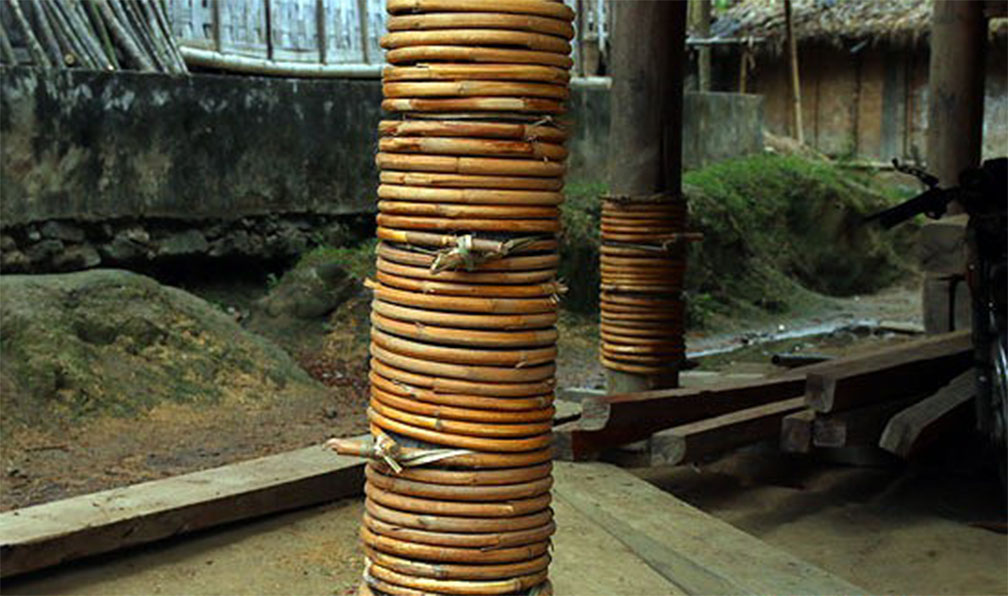Main Products: Basket
Ethnic Minority: kho-mu
From Noi Bai Airport (Hanoi): 251 km
From Tan Son Nhat Airport (HCMC): 984 km
Bamboo weaving is a famous traditional craft of the Kamu people. “Any Kamu person can weave; it’s only that some can do it well and some can’t!” And weaving at Dinh Son mountain village, Huu Kiem commune, has developed to a level of “every house weaving, everybody weaving.”
In Vietnam’s fabulous community of many peoples, the Kamu ethnic minority numbers 57,000, and among them more than 27,000 reside in Ky Son, Que Phong, Tuong Duong, and Quy Chau districts of western Nghe An province. The rest are mainly at Son La and Lai Chau provinces. Kamu people grow up in the midst of a poetically natural landscape of a mountainous area enclosed by imposing mountains, forests full of bird songs, and a pristine river. Their soul is always down to earth and close to nature, even in the ways of expressing the products they weave.
Kamu people create many weaved products, from containers, transport means, production tools, and fishing tools to instruments for ceremonies. All products have their own unique characteristics, and they are carefully made by rattan. Examples are rice papooses, food trays, chairs, cloth trunks, cases for steamed glutinous rice, and stitched boxes. A rice papoose provides an unusual but excellent means of transport to be used by any person of a working age. It flares at the top, has plaits of rattan, has a small rope around the head and a yoke on scuff of the neck. A case for steamed glutinous rice of the Kamu people is considered as an artistic work derived from bamboo bark that attracts any demanding user.
Depending on the specific product, Kamu people use different techniques: a twisting technique (teleho) for food trays which is the most complicated and difficult technique, double splints weaving (lai xoong) and triple splints weaving (lai xam) for papooses. Kamu people believe that there should be many designs on rice papooses and cases for steamed glutinous rice to represent a prosperous image for the user. Besides traditional precise weaving, Kamu people are heir to plentiful techniques of raw materials’ processing; for example, bamboo harvesting should be performed only during moonless periods, because bamboo at the beginning of the month contains much water, meaning it’s an easy target for insects. The people only harvest mature green or yellow ones, thereby ensuring durability and no insects. They know how, for effectiveness and efficiency, to split bamboo from the top and rattan from the bottom.
Though weaving is only a sideline work, it still brings considerable income to the Kamu. It is easy to notice that bamboo wares are not only popular utensils for the Kamu but also for neighboring peoples such as the H’mong, Thai, and Laotians; the Japanese particularly prize food trays of the Kamu. Businessmen have much interest in the uniqueness of the Dinh Son weaving as this is a new opportunity for introducing Vietnamese traditional weaving to friends all over the world.
Please come to visit the Kamu ethnic minority people at Dinh Son to admire nature and visit hard-working, honest, and skilled people. You will see their offering bamboo products at their market where it’s endearingly so simple, honest, but so impressive: “Please buy this food tray - only VND 50,000 but durable and will last for 50 years!”



